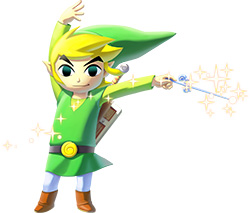Platform: Linux, Windows, Mac (digital distribution), Flash (web browser)
Not long ago, and guided by general consensus among friends and critics, I decided to acquire Machinarium, the then recent work by Amanita Design. To my surprise, when buying the game I was given their previous one, Samorost 2 (its first part is free), and both game's soundtracks. Shortly after I refused to keep playing Machinarium (another story) and mostly forgot about Amanita.
Fast forward to a boring evening, when I discovered Samorost 2's installer in my PC. "Let's try this," I told myself (metaphorically; I don't usually talk to myself), "a free game can't be worst than most you pay for."
Amanita Design is a studio specialized, judging by their main games, in Flash development and extremely detailed graphics. Gray, complex landscapes play an important part in their games, as do their beautiful musical scores. These two elements have earned the studio repetead and completely deserved awards.
Amanita's designs are, in essence, point and click graphic adventures with a very simple inventory system, if any, minimal stories, pretty backgrounds and limited interaction.
Amanita's designs are, in essence, point and click graphic adventures with a very simple inventory system, if any, minimal stories, pretty backgrounds and limited interaction.
In Samorost 2, the main character -let's call him/her Pyjama- wakes up to find a couple of space thieves stealing fruits from the garden's tree, and taking the guardian dog as a bonus. As a result, Pyjama embarks on an mission to rescue Dog and return to the home asteroid safe. And the player, not to be confused with the star, goes along for the ride.
Pyjama's adventure is a nice one, full of funny moments, detailed drawings, charming characters and some curious puzzles. So there are good things regarding this game. From time to time my efforts were rewarded with something more than "you managed to cross the door", which felt good, but not good enough. I always had this sour taste of frustration reminding me that I wasn't that much enjoyed.
But critics and players loved this game, so I am outnumbered. Am I wrong or do I have the right to call my Graphic Adventure Demise Culprit #3 to scene?
Pyjama's adventure is a nice one, full of funny moments, detailed drawings, charming characters and some curious puzzles. So there are good things regarding this game. From time to time my efforts were rewarded with something more than "you managed to cross the door", which felt good, but not good enough. I always had this sour taste of frustration reminding me that I wasn't that much enjoyed.
But critics and players loved this game, so I am outnumbered. Am I wrong or do I have the right to call my Graphic Adventure Demise Culprit #3 to scene?


